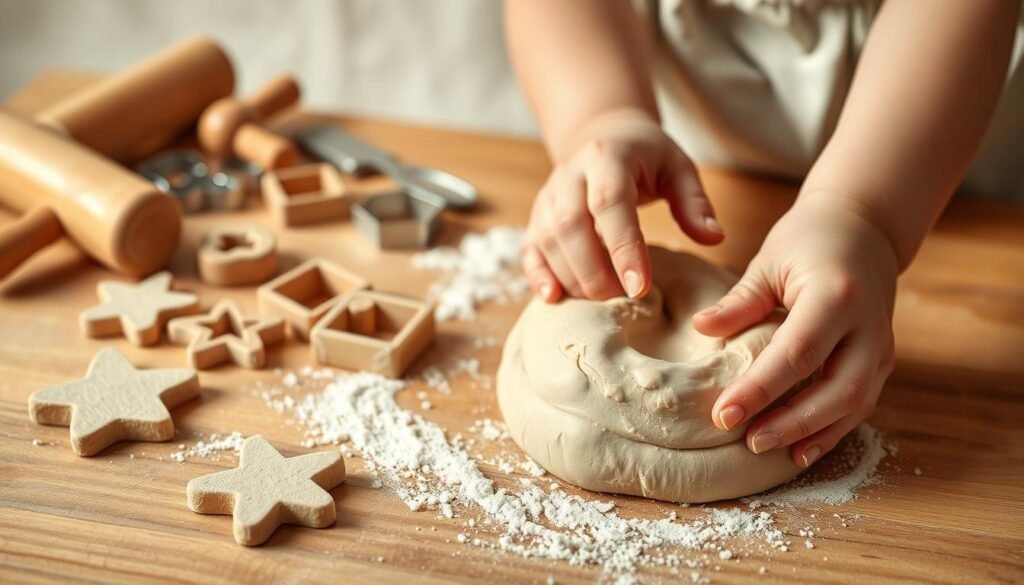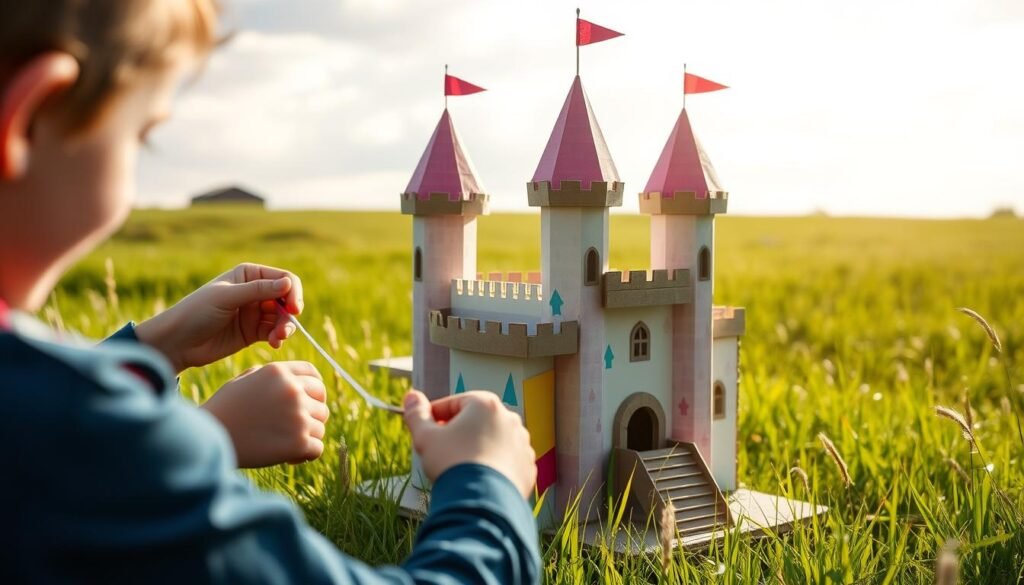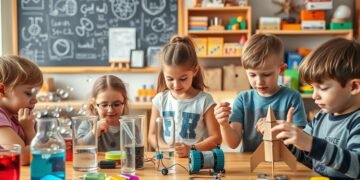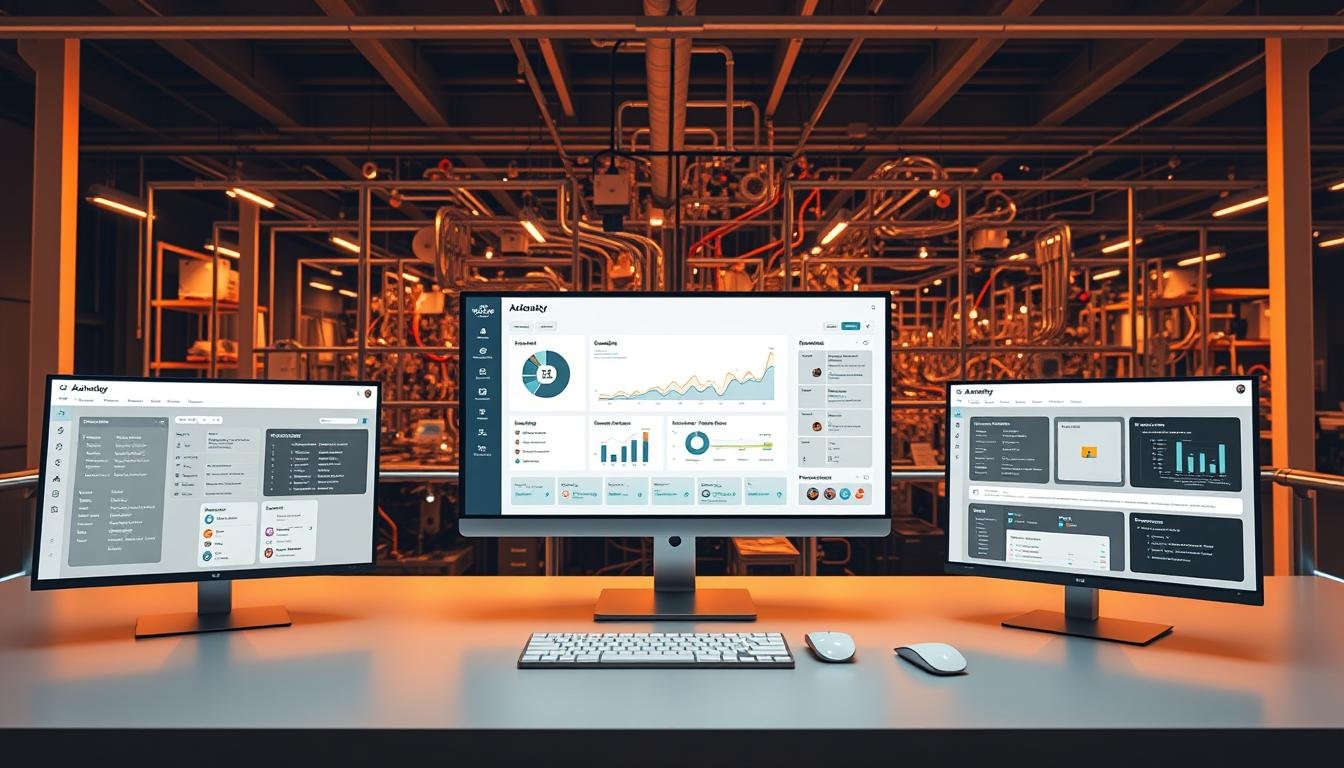Ever wondered how to turn household trash into treasure while sparking creativity in children? Eco-friendly crafting is the answer! It’s a fantastic way to combine sustainability with fun, teaching kids to repurpose everyday items like cardboard, plastic bottles, and paper rolls.
These projects aren’t just about making something new. They help develop fine motor skills, problem-solving, and patience. Plus, they’re perfect for bonding moments that mix learning with play. From a Water Microscope to Homemade Clay, each activity includes STEM elements to make it educational.
Looking for mess-free or low-mess options? These ideas are suitable for ages 3 and up, making them ideal for rainy days, weekends, or themed playdates. And don’t miss unique projects like “Mail a Hug,” which combines emotional learning with artistry.
Key Takeaways
- Eco-friendly crafting teaches sustainability and creativity.
- Projects help develop fine motor skills and problem-solving.
- Uses household recyclables to reduce waste.
- Includes STEM elements for educational value.
- Low-mess options are perfect for young children.
- Great for bonding and themed playdates.
- Unique projects like “Mail a Hug” combine art and emotional learning.
Introduction to Crafts for Kids
Arts and crafts are more than just fun—they’re a gateway to learning and growth. These activities help children develop fine motor coordination, spatial awareness, and an understanding of color theory. Whether it’s molding clay or painting, every project builds skills that go beyond the classroom.
Structured creativity, like the approach from Target using brands such as Play-Doh and Crazy Aaron’s, ensures that kids stay engaged while learning. These projects are adaptable for all skill levels, from toddlers to tweens, making them perfect for any age group.
Using recycled materials teaches resourcefulness and environmental awareness. It’s a great way to show children how to repurpose everyday items into something new and exciting. This approach also introduces the concept of process art, where the experience of creating matters more than the final product.
For outdoor-friendly variations, PBS KIDS’ nature crafts offer inspiration. These projects encourage kids to explore their surroundings while nurturing their imagination. From leaf collages to rock painting, the possibilities are endless.
Why Choose Recycled Materials for Kids’ Crafts?
Recycled materials are a goldmine for creative projects that teach kids valuable lessons. Not only do they save money, but they also encourage creativity and resourcefulness. Studies show that 73% of materials for these activities can be sourced from household waste, making them a budget-friendly option.
Using items like cardboard, plastic, and fabric scraps introduces kids to varied textures, enhancing sensory play. For example, the “Goofy Robots” project transforms cardboard boxes into fun, interactive toys. This hands-on approach helps children explore different materials while developing fine motor skills.
Beyond the tactile benefits, recycled materials have a positive environmental impact. A single shoebox guitar craft, for instance, keeps 1.3kg of cardboard out of landfills. This aligns with school curricula that emphasize sustainability, teaching kids the importance of reducing waste.
Safety is another advantage. Recycled materials often avoid small, purchased parts that could pose choking hazards. To stay organized, create a “recycling craft bin” with categorized compartments. This makes it easy to find the right pieces for any project.
Incorporating recycled materials into activities is a smart way to blend science, art, and environmental awareness. It’s a win-win for both kids and the planet.
Pompom Ice Pops
Turn colorful pompoms into playful ice pops with this creative activity. This project is perfect for all ages, combining art and sensory play. Best of all, it’s mess-free and uses simple materials you likely already have at home.
Materials Needed
Gather 3-4 sizes of pompoms in various colors, washable glue sticks, and recycled cardboard. You’ll also need craft sticks and crayons or markers for decorating. These materials make it easy to create vibrant and unique ice pops.
Steps to Create
Start by sorting the pompoms by color to create fun “flavor” combinations, like strawberry-mango. Next, apply crisscross glue patterns on the craft sticks to securely attach the pompoms. This step helps develop fine motor skills.
For added creativity, cut up cereal boxes to make faux wrappers. Let the kids decorate them with crayons or markers. Younger children can focus on color sorting, while older ones can design branded popsicle labels.
Pro Tip: Use a hot glue gun (adult-only step) for longer-lasting creations. This ensures the pompoms stay securely attached during play.
Homemade Clay
Discover how to make your own clay at home with simple ingredients. This DIY project is perfect for blending art and science, teaching kids about measurements and chemical reactions. Plus, it’s a great way to spark creativity while using everyday kitchen items.
Ingredients
You’ll need 2 cups of baking soda, 1 cup of cornstarch, and 1.5 cups of water. These ingredients are non-toxic and safe for kids to handle. Measuring them out is a great way to introduce basic math skills.
How to Make
Start by mixing the baking soda and cornstarch in a saucepan. Slowly add water while stirring to avoid lumps. Cook the mixture over medium heat, stirring constantly until it thickens into a dough-like consistency.
Once the dough forms, let it cool slightly before kneading it into a smooth clay. For added fun, divide the dough and mix in food coloring before cooking. Alternatively, paint the clay after it’s baked for vibrant results.
Bake the clay at 200°F for 30-45 minutes to harden it. This step transforms the clay’s structure through a chemical reaction, making it durable for projects like Christmas ornaments or handprint keepsakes.
Pro Tip: Wrap the clay in beeswax cloth to keep it pliable for up to two weeks. Always supervise kids during baking to ensure safety.
Dinosaur Feet
Bring prehistoric fun to life by crafting dinosaur feet from recycled materials. This activity is perfect for themed playdates or imaginative play, and it’s suitable for all ages. Using simple household items, you can create a roaring pair of dino feet that kids will love.
Supplies
Gather old flip-flops as the base, egg cartons for claws, and acrylic paints. You’ll also need markers for detailing and elastic straps or Velcro for adjustable fits. These pieces are easy to find and repurpose, making this project eco-friendly and budget-friendly.
Instructions
Start by measuring your child’s foot and adding 3 inches for realistic proportions. Cut the flip-flops into the desired shape, using serrated edges for a “raptor” look or rounded shapes for herbivores. Attach egg carton claws to the front for added effect.
Use sponges to paint scale textures and toothbrushes for splatter effects. This step adds a creative touch to the design. Secure the feet with elastic straps or Velcro for a comfortable fit. For extra fun, create a matching dino tail using pool noodle segments.
While crafting, discuss prehistoric periods to make this a learning experience. This project combines creativity, play, and education in one engaging activity.
Flower Pens
Transform ordinary pens into blooming masterpieces with this creative project. Flower pens are a delightful way to combine art and functionality, making them perfect for gifts or personal use. This activity is ideal for enhancing fine motor skills and sparking creativity in children.
Materials
You’ll need plastic flowers, floral tape, and pens. For a unique touch, consider using silk flowers from old arrangements or handmade crepe paper blooms. These alternatives add variety and allow for customization with different colors and textures.
Steps
Start by removing the pen caps and aligning the flower stems with the ink cartridge. Secure the stems using floral tape, wrapping it in spiral patterns to ensure a tight hold. This step helps children practice tension control and grip strength.
Next, add decorative elements like ribbon bows or ladybug charms to personalize the pens. These details make each creation unique and visually appealing. For a functional twist, use the pens as reading trackers or bookmark pens during storytime.
Pair the flower pens with homemade stationery for a complete gift set. This project not only encourages creativity but also teaches resourcefulness and attention to details. It’s a fun and educational activity that kids will love.
Ooey Gluey Suncatchers
Brighten up any window with vibrant suncatchers made from simple household items. This activity combines art and science, teaching kids about color blending and light refraction. It’s perfect for all ages and uses materials you likely already have at home.
Supplies Needed
Gather clear glue, food coloring, and puffy paint. For the base, you can use upcycled jar lids or shaped cardboard outlines. Glitter glue adds a sparkly touch, while droppers help with precise color application. Parchment paper ensures easy drying on uneven surfaces.
Creation Process
Start by outlining your design with puffy paint to contain the glue flow. This step helps kids practice fine motor skills and encourages creativity. Next, layer complementary colors using droppers for precision. Watching the colors blend is both fun and educational.
Let the suncatchers dry on parchment paper to avoid sticking. Once dry, explain how light refracts through the colors, creating prism effects. This adds a science element to the project. For seasonal themes, try autumn leaves or snowflakes to match the time of year.
Display the finished suncatchers on windows to catch the sunlight. This project is a great way to combine art, science, and creativity in one engaging activity.
Mail a Hug
Sending a heartfelt gesture has never been easier with this creative project. “Mail a Hug” is a unique way to combine creativity and emotional connection, making it a perfect gift for loved ones. This activity is ideal for teaching empathy and creating lasting moments with children.
Materials Required
To get started, gather butcher paper, washable ink pads for handprints, and markers. These simple materials are easy to find and allow for endless customization. For added fun, consider tracing feet to create “hugging legs” or adding fingerprint hearts for a personal touch.
How to Make
Begin by having the child press their hands onto the ink pads and then onto the butcher paper. This creates the base of the hug. Use markers to add details like names or messages. Fold the arms in an accordion style for a 3D effect, reinforcing the joints for durability.
For mailing, use poster tubes from shipping leftovers to protect the design. Include a companion letter where the child can express their feelings, adding an emotional literacy component. Document the process with photos for scrapbooking, turning this into a cherished memory.
This DIY project not only fosters creativity but also teaches kids the value of emotional expression. It’s a meaningful way to stay connected, even from a distance.
Goofy Robots
Unleash your child’s inner inventor with these quirky robot creations. This DIY project combines creativity and science, turning everyday items into interactive toys. It’s a fun way to teach shapes, problem-solving, and basic circuitry while sparking imagination.
Supplies
Gather cardboard boxes, toilet paper rolls, and bottle caps for the main pieces. Add buttons, old circuit boards, and aluminum foil for decorative touches. Brass fasteners and coin batteries can bring movement and light to your robot designs.
Steps to Build
Start by assembling the body using slot-and-tab or glue-based techniques. Attach arms with brass fasteners for posability. Decorate with aluminum foil armor or LED eyes powered by coin batteries. Encourage kids to create robot command languages or backstories for added fun.
For a science twist, use conductive paint to create basic circuitry trails. This adds an educational element to the activity. Display the finished robots proudly or use them for imaginative play. This project is a perfect blend of learning and creativity.
Homemade Finger Paint
Explore the world of color with a simple, homemade paint recipe. This DIY project is perfect for introducing kids to the joys of art while keeping things safe and non-toxic. Using basic kitchen ingredients, you can create vibrant paints that are both fun and educational.
Ingredients
To make your own finger paint, you’ll need sugar, cornstarch, and water. These ingredients are easy to find and safe for young children to handle. For added variety, consider using yogurt for an edible version or tempura for a washable base.
How to Prepare
Start by mixing sugar and cornstarch in a bowl. Gradually add water while stirring to avoid lumps. Heat the mixture on low until it thickens into a smooth consistency. Let it cool before dividing it into smaller portions for coloring.
For gradient colors, use ice cube trays to mix different shades. Add sand for a gritty texture or corn syrup for a glossy finish. Experiment with natural brushes like pine needles or feathers for unique application techniques.
Store the paint in airtight containers and refrigerate for up to two weeks. For cleanup, use a baking soda paste to remove stains from surfaces. This project is a great way to blend science and creativity in one engaging activity.
Water Microscope
Discover the wonders of science with a simple water microscope. This DIY project is perfect for introducing kids to the basics of light refraction and microscopy. Using everyday items, you can create a tool that sparks curiosity and encourages hands-on learning.
Materials Needed
To build your water microscope, gather a clear plastic cup, plastic wrap, rubber bands, and a googly eye. For added functionality, consider using a smartphone camera lens or LED flashlight. These materials are easy to find and make the project both fun and educational.
Steps to Create
Start by cutting a small observation window in the cup using safety scissors. Attach a piece of plastic wrap over the opening with rubber bands to create a membrane. This step is crucial for observing details like leaf veins or fabric weaves.
Place your sample on the membrane and add a few drops of water to magnify the view. For better visibility, use grid paper under the sample to measure and document your findings. This adds a scientific touch to the activity.
For advanced modifications, attach an LED flashlight to study shadows or explore light patterns. Discuss the history of microscopy, mentioning Antonie van Leeuwenhoek’s inventions, to connect this project to real-world science.
This water microscope is a fantastic way to blend creativity and learning. It’s a simple yet effective tool that makes science accessible and exciting for young minds.
Create a Castle
Build a fortress fit for royalty using everyday household items. This project is perfect for sparking imagination and teaching kids about architectural design. With simple supplies, you can create a castle that’s both fun and educational.
Supplies
Gather cereal boxes, paper towel rolls, and metallic markers. These materials are easy to find and perfect for creating the main pieces of your castle. Add string for a drawbridge pulley and clothespins for character figurines.
Instructions
Start by cutting the cereal boxes into castle walls. Use the paper towel rolls as towers. Add battlement notches for an authentic look. Attach a drawbridge with a string pulley system for interactive play.
Next, use sponge-stippling techniques to paint stone textures. This adds depth to your design. Let the kids decorate with metallic markers for a shiny, royal finish.
For storytelling, create character figurines from clothespins. Compare motte-and-bailey vs. concentric castle designs to add a historical angle. This makes the activity both fun and educational.
Turn this into a group project by building a castle town with neighbors. This encourages teamwork and creativity. With a little imagination, your castle will be the center of endless adventures.
Conclusion
Wrap up your creative journey with these eco-friendly and engaging activities. These projects not only develop skills like problem-solving and fine motor coordination but also create lasting moments of family bonding. By using recycled materials, you’re teaching children the importance of sustainability while sparking their creativity.
Share your creations on social media using hashtags like #EcoCrafts and #CreativeKids to inspire others. For more ideas, explore Target’s craft kits, which complement these activities perfectly. As your child grows, consider progressing to more complex projects, like PBS KIDS’ nature crafts, to keep the learning and fun going.
Don’t forget to sign up for Highlights emails to receive more tips and inspiration. Finally, preserve these handmade treasures as cherished childhood mementos. They’re not just gifts of art but memories that last a lifetime.
FAQ
What are some easy projects using recycled materials?
You can try making pompom ice pops, homemade clay, or even goofy robots using items like cardboard, old fabric, and plastic bottles.
How can I make homemade clay for creative activities?
Mix baking soda, cornstarch, and water, then cook until it forms a dough. Let it cool, and your child can mold it into fun shapes.
What supplies are needed for dinosaur feet?
You’ll need cardboard, paint, markers, and glue to create these playful, wearable designs.
Can I make flower pens at home?
Yes! Gather pens, artificial flowers, and tape to craft these colorful and functional tools.
How do I create ooey gluey suncatchers?
Use glue, food coloring, and plastic lids to make vibrant, translucent decorations for windows.
What’s a unique way to send a hug?
Trace your child’s arms on paper, decorate it, and mail it as a heartfelt keepsake.
What ingredients are needed for homemade finger paint?
Combine flour, salt, water, and food coloring for a safe and washable paint option.
How can I make a water microscope?
Use a glass jar, water, and small objects to explore magnification and science in a simple way.
What’s a fun way to build a castle?
Use recycled boxes, paint, and markers to design a creative play structure.
Why are recycled materials great for creative projects?
They’re eco-friendly, cost-effective, and encourage imagination and hands-on learning.










